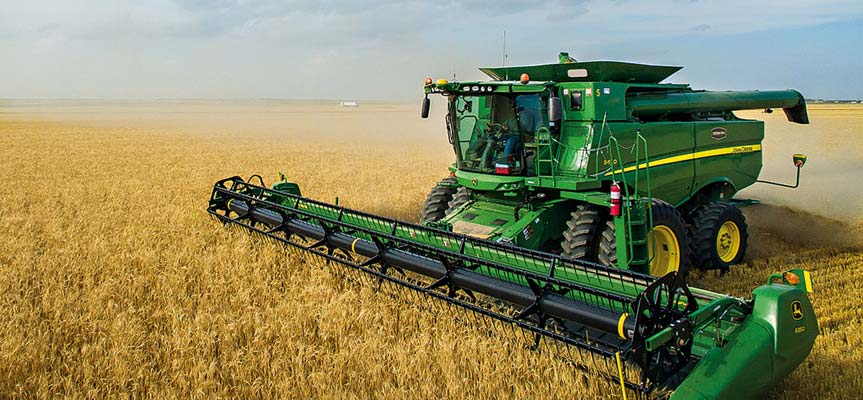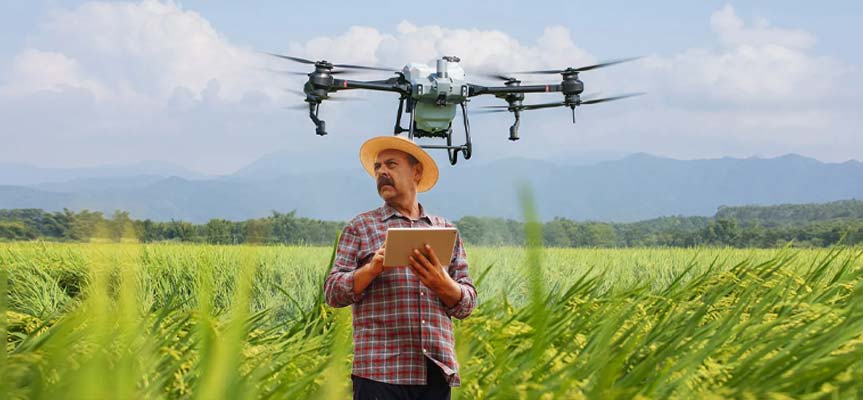Modern Agriculture in Iran: A Strategic Shift Toward Modernization
Agriculture in Iran, with a history spanning several thousand years, has always played a vital role in the country’s economy, food security, and culture. However, with population growth, climate change, diminishing water resources, and the need for greater efficiency, traditional farming methods can no longer meet today’s demands. In this context, “modern agriculture in Iran” has emerged as a strategic solution to address these challenges and optimize resource utilization. This article offers an analytical look at the current state, advantages, challenges, and modern technologies in Iran’s agricultural sector, while also examining the role of brands, innovation centers, and the future of the industry.
Current State of Agriculture in Iran
Despite its vast natural resources, Iran’s agriculture faces significant issues such as low productivity, water wastage, soil erosion, and a lack of modern technology adoption. The share of agriculture in the Gross Domestic Product (GDP) has declined, and rural-to-urban migration threatens the sector’s workforce. While traditional farming still accounts for a significant portion of production, its underdevelopment presents a major obstacle to sustainable growth.
Read more: What is modern agriculture?
Why Is Modern Agriculture Necessary?
Modernizing agriculture is not only essential for boosting production but also for preserving natural resources, improving product quality, expanding exports, and ensuring food security. Depleting water resources, the need to reduce costs, global competitiveness, and changing consumption patterns are among the key drivers pushing Iran toward agricultural modernization.

Modern Agricultural Technologies in Iran
Today, modern agriculture in Iran is closely tied to various technologies, including:
- Internet of Things (IoT) in Agriculture
The use of sensors to monitor soil moisture, ambient temperature, plant conditions, and livestock nutrition in real-time has enabled smart resource management.
-
Satellite Imagery and Drones
Aerial imagery is used to monitor farm conditions, detect pests, and identify critical areas, significantly boosting efficiency.
-
Precision Farming
By analyzing environmental data, exact amounts of fertilizers, water, pesticides, and seeds are allocated to each area to prevent resource waste.
-
Agricultural Robots
From harvesting crops to removing weeds, robots are actively being used in many modern farms around the world and gradually in Iran as well.
-
Smart Irrigation Systems
Smart drip irrigation, powered by weather and soil data, has become highly applicable in Iran’s arid regions.

Advantages of Modern Agriculture in Iran
- Water Consumption Reduction: Smart irrigation systems have reduced water usage by up to 50%.
- Improved Product Quality: Agricultural technology reduces pesticide use, leading to healthier products.
- Increased Efficiency: Data analysis enables more scientific decision-making and improves yield per hectare.
- Cost Reduction: Digital tools and devices help cut labor costs and input consumption.
Challenges of Implementing Modern Agriculture in Iran
- High cost of equipment
- Lack of sufficient farmer training
- Absence of digital infrastructure in rural areas
- Inadequate government support in some provinces
The Role of Startups in Agricultural Transformation
Iranian startups have played a crucial role in advancing modern agriculture by creating smart platforms, designing sensors, developing specialized apps for farmers, and building intelligent soil and weather analysis tools. These emerging businesses have bridged the gap between knowledge and practice.
Farmer Education: The Key to Transformation
No transformation is sustainable without education. Holding training courses, publishing scientific content, providing educational apps, and offering financial incentives for learning technology are all essential to the success of modern agriculture.
International Cooperation in Developing Iranian Agriculture
Collaborations with countries such as the Netherlands, Japan, and Germany, through knowledge transfer, importing advanced equipment, and adopting innovative agri-business models—have provided a solid foundation for technological advancement in Iran.
Digital Agriculture in Iran: A Near Future
Digital agriculture in Iran is taking shape through big data analysis, artificial intelligence, blockchain, and management applications. These advancements are enhancing supply chain transparency, improving yields, and optimizing risk management.
Read more: Modern wheat farming
Agricultural Value Chain in Modern Farming
Modern agriculture isn’t limited to production alone. From planting to harvesting, packaging, marketing, exporting, and even post-consumption management—all fall within the agricultural value chain. Creating transparency in this chain and integrating technology at every stage are critical components of sustainable development.

Impact of Modern Agriculture on Exports
Improving product quality, eliminating pesticide residues, standardization, and using safe raw materials all contribute to enhanced export potential and access to global markets.
Government Support: A Prerequisite for Long-Term Success
Providing bank facilities, smart agricultural insurance, tax exemptions for modern equipment importers, and incentive policies can play a crucial role in expanding modern agriculture.
Leveraging Academic Capabilities
Building a bridge between universities and the agricultural sector can foster a platform for research and development (R&D). Centers like Grownida can serve as effective intermediaries between research and practical implementation.
Sustainable Development Through Modern Agriculture
Modern agriculture is not only essential for increasing production but also for protecting the environment, reducing waste, decreasing greenhouse gas emissions, and optimizing the use of resources an unavoidable necessity.
The Role of Women in Modern Agriculture
Women, especially in home-based occupations and local productions, can play a significant role in enhancing agricultural productivity through proper training and the use of simple technologies.
Conclusion
Modern agriculture in Iran is no longer a choice, it is a necessity. The transition from traditional to smart and modern agriculture requires multilateral cooperation, education, investment, and sound policymaking. Companies like Grownida with local innovations, startups with creative technologies, and motivated, well-trained farmers can shape a sustainable future for agriculture in Iran.
If you are a business owner, researcher, or farmer looking for innovative solutions to develop agriculture, connect with innovation centers like Grownida and take meaningful steps toward transforming Iran’s agriculture.
Frequently Asked Questions
What technologies are involved in modern agriculture in Iran?
They include the Internet of Things, precision agriculture, drones, robots, smart irrigation systems, and digital agriculture.
Does modern agriculture in Iran yield more than traditional methods?
Yes. Higher productivity, reduced resource consumption, and improved product quality are among its key benefits.
How can farmers transition to modern agriculture?
By participating in training programs, consulting with specialists, and utilizing government facilities and support.
What is the outlook for digital agriculture in Iran?
It is growing, with a focus on data-driven approaches, artificial intelligence, and digital tools for smart decision-making and cost reduction.

